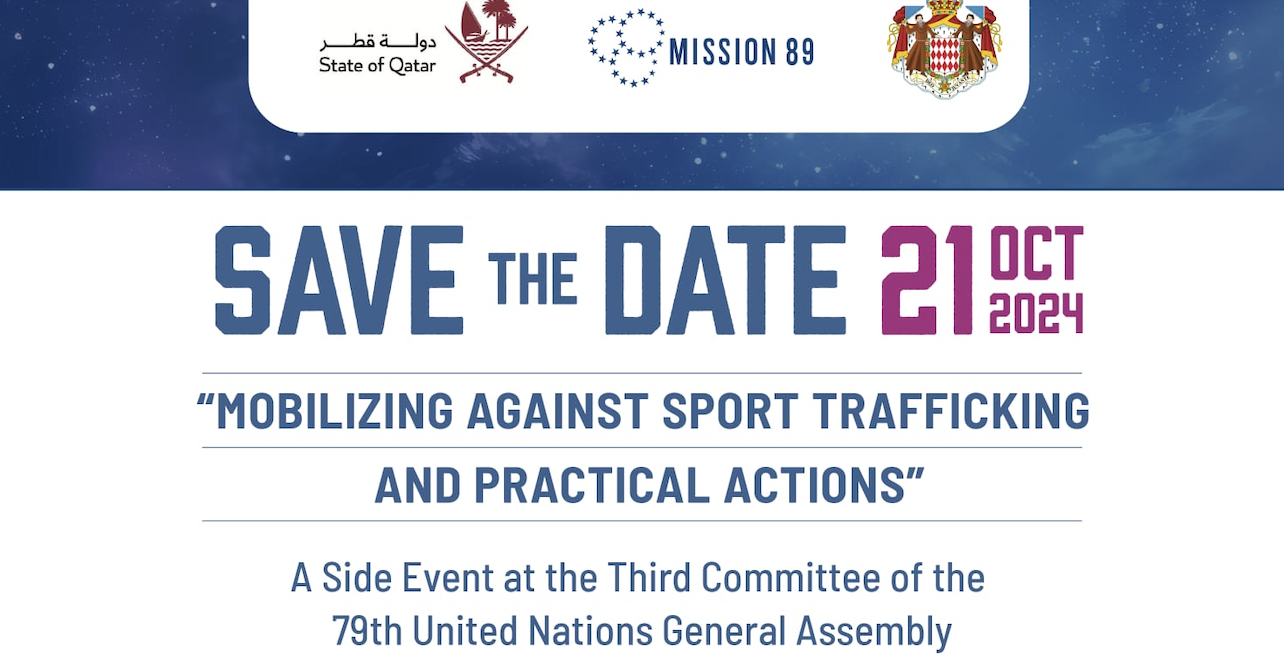October 14 – The trafficking of young athletes is one of the dark areas of sport with many governing and governments barely recognising the problem.
On October 21 at a side event at the Third Committee of the 79th United Nations General Assembly at the UN headquarters in New York, the issues will be highlighted under the session title ‘Mobilising against sport trafficking and practical actions’.
It is the third year that sports trafficking NGO, Mission 89, has organised the event alongside the permanent missions of Monaco and Qatar to the UN.
This edition will perhaps have a sharper edge than previous meetings as Mission 89 will launch a paper that gives a clearer definition of sport trafficking that it has developed alongside the University of Loughborough and the Commonwealth Games Association.
Lorena Bright, head of Mission 89, says that at the UN meeting they will be seeking “a buy-in form member states. We have established a working definition and it is now time to build a consensus around that definition, getting states to recognise and use it, We also want to create greater communication between member states to collect and share data that helps everyone address the problem.”
The biggest issue has always been in coming up with a robust definition of what sports trafficking actually looks like. At what point do smugglers become human traffickers – there is a thin line between the two criminal activities. The new report aims to provide that foundation of understanding of what constitutes sports trafficking.
Bright says that it runs far deeper and more entrenched in sports than governing bodies and sports stakeholders generally care to recognise.
For every athlete that is moved to a new country and makes it to the top of their sport (and more athletes are moved between countries in football than any other sport), there are many more who are trafficked but don’t make it and end up in modern day servitude, slavery or even forced to work as sex slaves.
It is a problem football has turned a blind eye to. Football’s institutions say that human trafficking is not their responsibility but that of government authorities. It is a convenient way of avoiding responsibility, driven primarily by the desire to not get in the way of the talent marketplace that feeds and fuels the transfer market in search of the young talent that, polished and turned into a professional, can generate money for a long-tailed food chain.
The reality is that, in the richest sport of them all, there is little incentive to crack down on trafficking. A trafficked athlete who makes it in football can be a huge money earner from the trafficker all the way through to the club that hires and, eventually, sells the player on.
Bright points out that people smuggling is different to sports trafficking but there is a point at which a smuggler becomes a sports trafficker and it is this intersection that needs to be understood and monitored.
She points to the high profile and horrific abuse of East African runners who have been trafficked and despite their successes, have remained under the exploitation of traffickers. The issue is not just confined to Africans travelling to Europe but can also be identified iin Cuban baseball players being trafficked through Mexico into the US and even in the basketball and Mai Tai fighting.
“Labour exploitation in many sports situations is a form of trafficking,” says Bright.
Contact the writer of this story at moc.l1751602450labto1751602450ofdlr1751602450owedi1751602450sni@n1751602450osloh1751602450cin.l1751602450uap1751602450

